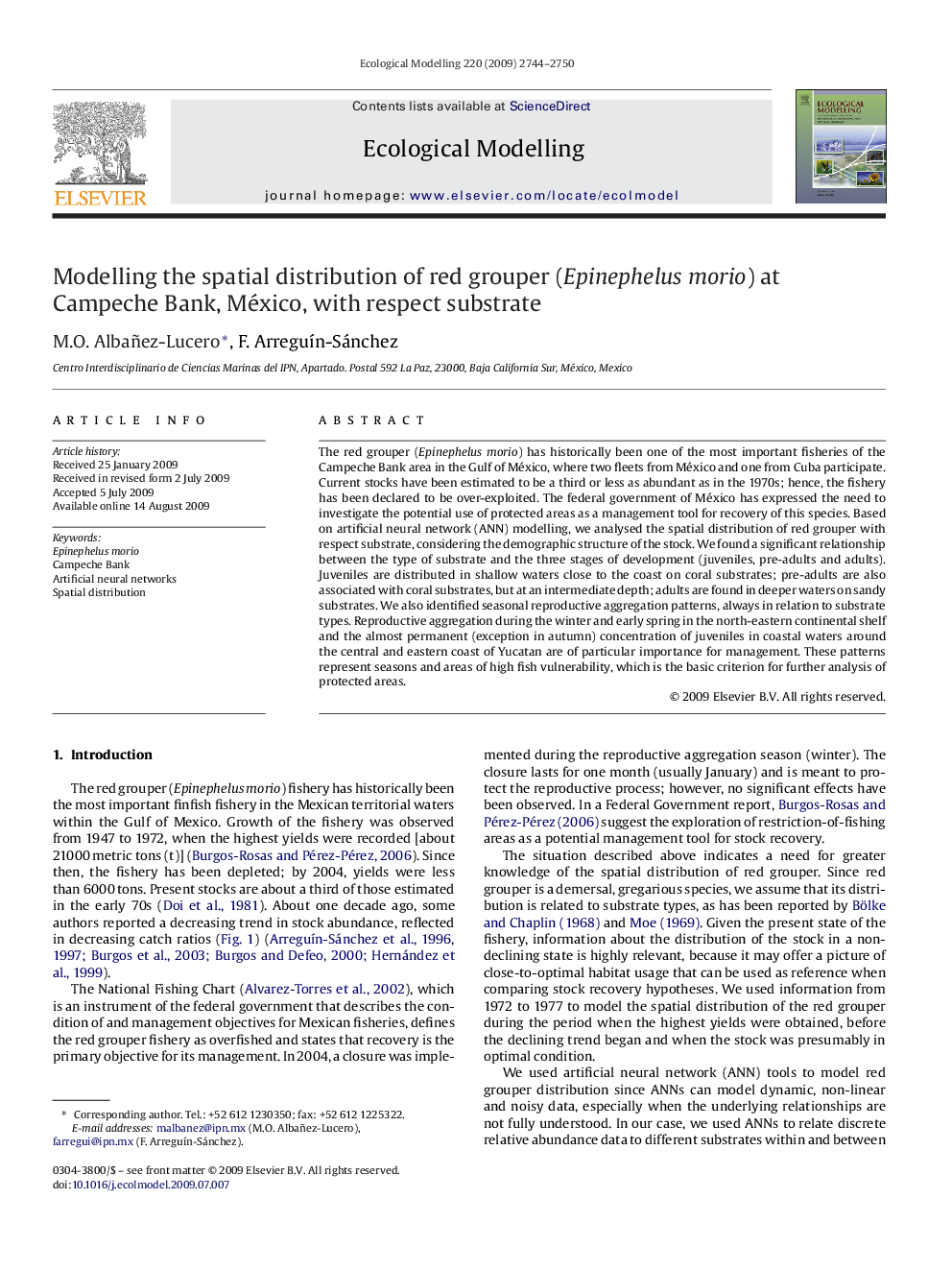| Article ID | Journal | Published Year | Pages | File Type |
|---|---|---|---|---|
| 4377556 | Ecological Modelling | 2009 | 7 Pages |
Abstract
The red grouper (Epinephelus morio) has historically been one of the most important fisheries of the Campeche Bank area in the Gulf of México, where two fleets from México and one from Cuba participate. Current stocks have been estimated to be a third or less as abundant as in the 1970s; hence, the fishery has been declared to be over-exploited. The federal government of México has expressed the need to investigate the potential use of protected areas as a management tool for recovery of this species. Based on artificial neural network (ANN) modelling, we analysed the spatial distribution of red grouper with respect substrate, considering the demographic structure of the stock. We found a significant relationship between the type of substrate and the three stages of development (juveniles, pre-adults and adults). Juveniles are distributed in shallow waters close to the coast on coral substrates; pre-adults are also associated with coral substrates, but at an intermediate depth; adults are found in deeper waters on sandy substrates. We also identified seasonal reproductive aggregation patterns, always in relation to substrate types. Reproductive aggregation during the winter and early spring in the north-eastern continental shelf and the almost permanent (exception in autumn) concentration of juveniles in coastal waters around the central and eastern coast of Yucatan are of particular importance for management. These patterns represent seasons and areas of high fish vulnerability, which is the basic criterion for further analysis of protected areas.
Related Topics
Life Sciences
Agricultural and Biological Sciences
Ecology, Evolution, Behavior and Systematics
Authors
M.O. Albañez-Lucero, F. ArreguÃn-Sánchez,
